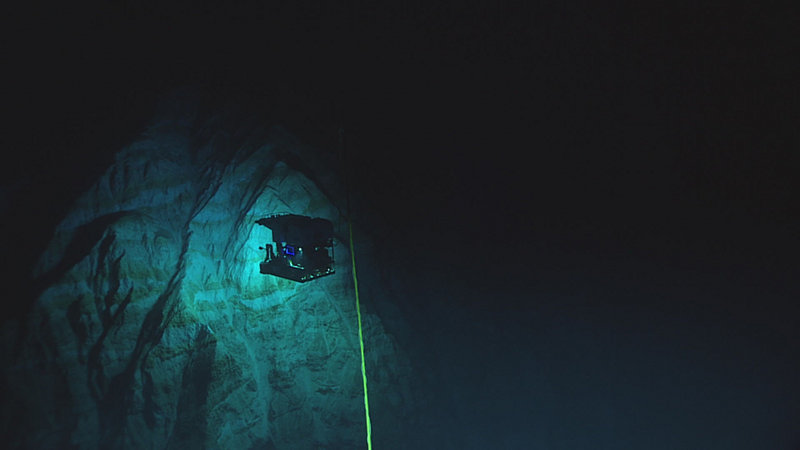What is the “deep” ocean?
The deep ocean is generally defined as the depth at which light begins to dwindle, typically around 200 meters (656 feet).

Remotely operated vehicle Deep Discoverer explores the Mariana Trench at the depth of 6,000 meters (3.7 miles). Image courtesy of the Office of Ocean Exploration and Research. Download image (jpg, 334 KB).
The top 200 meters of the ocean are known as the sunlight, or euphotic, zone. Plants, who convert the sun’s energy into food via photosynthesis, form the basis of the food chain at these depths, where there is indeed sunlight. At 200 meters depth, we enter the twilight zone, where light starts to decrease rapidly. Ocean depths greater than 1,000 meters (3,280 feet) are completely devoid of light and photosynthesis does not take place.
Sunlight doesn't just provide the energy for photosynthesis: it also heats the water. This means that the deep ocean is also cold – with an average temperature of only 4°C (39°F). These depths are also subject to extreme pressure, from about 40 to over 110 times the pressure of Earth’s atmosphere.
This means the “deep” is the part of our ocean that is dark, cold, food-poor, subject to intense pressure, and typically deeper than 200 meters. Despite these extreme conditions, life has found a way to thrive even at great ocean depths, and with each new mission to explore the deep, we make new discoveries that increase our understanding of one of the largest, but least understood, living places on our planet.